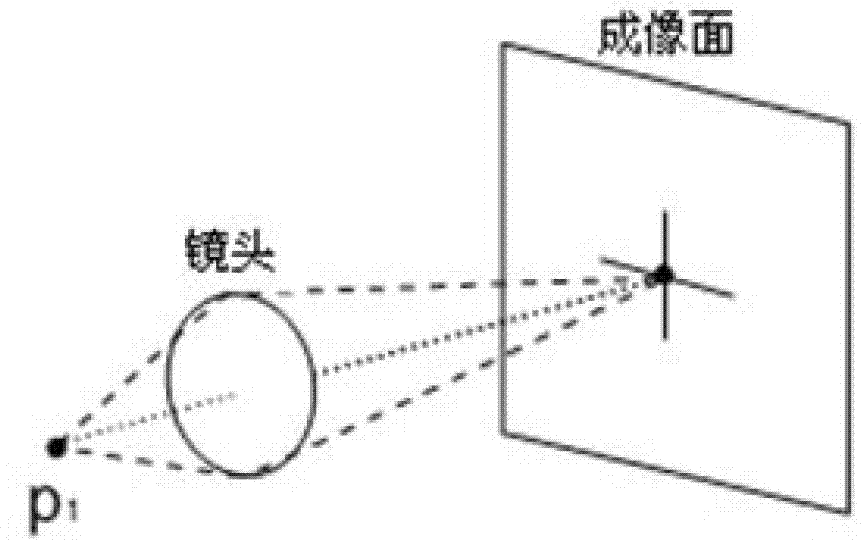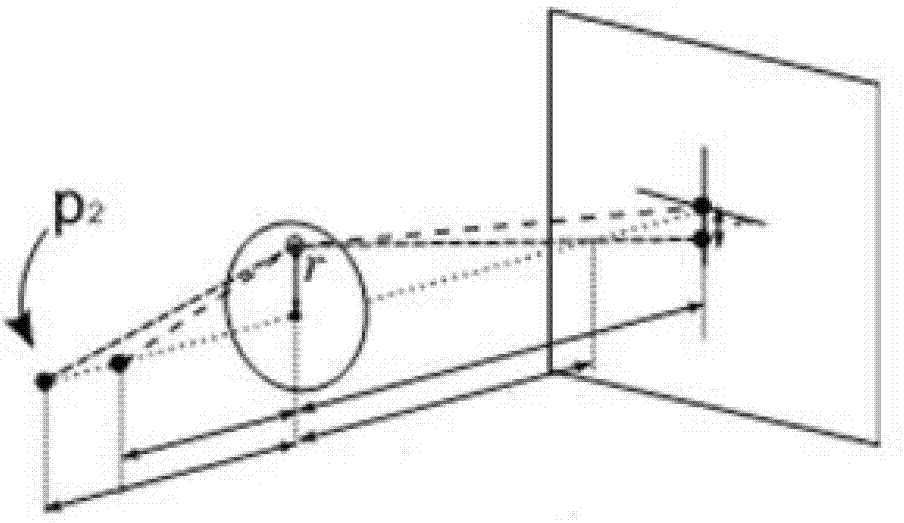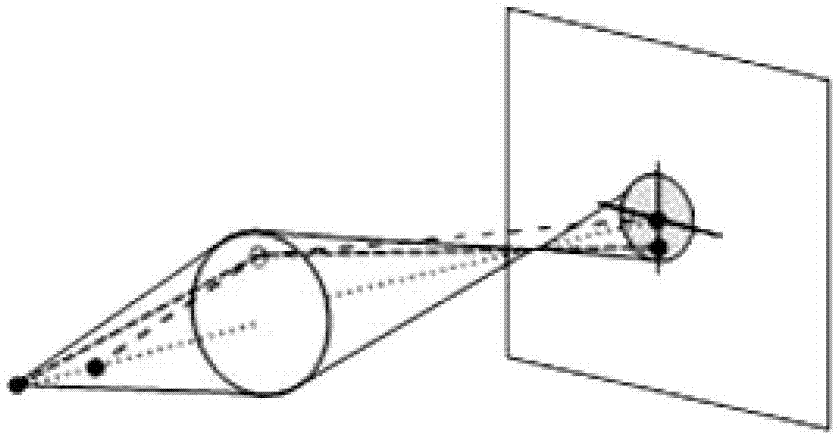Target ranging method based on synthetic aperture focused images
A technology of target distance measurement and reference image, which is applied in the field of surveying and mapping, and can solve differences. Due to the influence of occlusion or shadow, some points of the scene may not appear in all images, increasing the difficulty of matching, and increasing image differences. and other problems, to achieve the effect of fast measurement speed, no electromagnetic wave pollution, and smooth occlusion of image changes
- Summary
- Abstract
- Description
- Claims
- Application Information
AI Technical Summary
Problems solved by technology
Method used
Image
Examples
Embodiment Construction
[0024] The technical scheme of the present invention is described in detail below in conjunction with accompanying drawing:
[0025] In order to facilitate the public to fully understand the technical solution of the present invention, the basic principle of synthetic aperture focusing imaging is firstly introduced:
[0026] When imaging with a large-aperture lens, the incident light rays that pass through various parts of the lens are refracted by the lens, and the target light rays converge again to form a two-dimensional image on the imaging surface. If the incident light is separated and imaged according to the sub-apertures it passes through, and then superimposed by the signal processing method, a synthetic aperture image is obtained, and the imaging result is consistent with that of a large-aperture lens. Figure 1a Show target point p 1 Focus on the imaging surface through the large-aperture optical lens; Figure 1b It shows that there is a sub-aperture at a distance...
PUM
 Login to View More
Login to View More Abstract
Description
Claims
Application Information
 Login to View More
Login to View More - R&D
- Intellectual Property
- Life Sciences
- Materials
- Tech Scout
- Unparalleled Data Quality
- Higher Quality Content
- 60% Fewer Hallucinations
Browse by: Latest US Patents, China's latest patents, Technical Efficacy Thesaurus, Application Domain, Technology Topic, Popular Technical Reports.
© 2025 PatSnap. All rights reserved.Legal|Privacy policy|Modern Slavery Act Transparency Statement|Sitemap|About US| Contact US: help@patsnap.com



